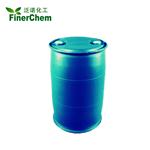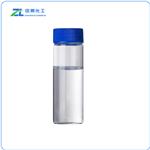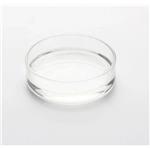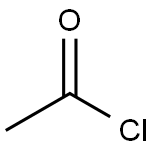N,N-Dimethylacetamide
- CAS No.
- 127-19-5
- Chemical Name:
- N,N-Dimethylacetamide
- Synonyms
- DMAC;Dimethyl acetamide;CH3CON(CH3)2;N,N-Dimethylacetamide, 99%, pure;dimethylacetamid;N,N-Dimethylethanamide;Acetic acid dimethylacetamide;DMAC, Dimethylacetamide;U-5954;nsc3138
- CBNumber:
- CB8853004
- Molecular Formula:
- C4H9NO
- Molecular Weight:
- 87.12
- MDL Number:
- MFCD00008686
- MOL File:
- 127-19-5.mol
- MSDS File:
- SDS
| Melting point | -20 °C (lit.) |
|---|---|
| Boiling point | 164.5-166 °C (lit.) |
| Density | 0.937 g/mL at 25 °C (lit.) |
| vapor density | 3.89 (vs air) |
| vapor pressure | 40 mm Hg ( 19.4 °C) |
| refractive index |
n |
| Flash point | 158 °F |
| storage temp. | Store below +30°C. |
| solubility | >1000g/l soluble |
| form | Liquid |
| pka | -0.41±0.70(Predicted) |
| color | Colorless to yellowish |
| PH | 4 (200g/l, H2O, 20℃) |
| Relative polarity | 6.3 |
| Odor | Faint ammonia odor |
| PH Range | 4 at 200 g/l at 20 °C |
| Evaporation Rate | <0.17 |
| Odor Threshold | 0.76ppm |
| explosive limit | 1.7-11.5%(V) |
| Water Solubility | miscible |
| λmax |
λ: 270 nm Amax: 1.00 λ: 280 nm Amax: 0.30 λ: 290 nm Amax: 0.15 λ: 310 nm Amax: 0.05 λ: 320 nm Amax: 0.03 λ: 360-400 nm Amax: 0.01 |
| Merck | 14,3227 |
| BRN | 1737614 |
| Exposure limits | NIOSH REL: TWA 10 ppm (35 mg/m3), IDLH 300 ppm; OSHA PEL: TWA 10 ppm; ACGIH TLV: TWA 10 ppm (adopted). |
| Dielectric constant | 37.8(25℃) |
| Stability | Stable. Combustible. Incompatible with strong oxidizing agents. |
| InChIKey | FXHOOIRPVKKKFG-UHFFFAOYSA-N |
| LogP | -0.77 at 25℃ |
| CAS DataBase Reference | 127-19-5(CAS DataBase Reference) |
| EWG's Food Scores | 3 |
| FDA UNII | JCV5VDB3HY |
| Proposition 65 List | N,N-Dimethylacetamide |
| NIST Chemistry Reference | Acetamide, N,N-dimethyl-(127-19-5) |
| IARC | 2B (Vol. 123) 2020 |
| EPA Substance Registry System | Dimethylacetamide (127-19-5) |
SAFETY
Risk and Safety Statements
| Symbol(GHS) |   GHS07,GHS08 |
|||||||||
|---|---|---|---|---|---|---|---|---|---|---|
| Signal word | Danger | |||||||||
| Hazard statements | H312+H332-H319-H360D | |||||||||
| Precautionary statements | P201-P280-P302+P352+P312-P304+P340+P312-P305+P351+P338-P308+P313 | |||||||||
| Hazard Codes | T | |||||||||
| Risk Statements | 11-20/22-61-20/21-36 | |||||||||
| Safety Statements | 16-24-53-45-36-28-26 | |||||||||
| OEB | A | |||||||||
| OEL | TWA: 10 ppm (35 mg/m3) [skin] | |||||||||
| RTECS | AB7700000 | |||||||||
| F | 3-10 | |||||||||
| Autoignition Temperature | 914 °F | |||||||||
| HS Code | 29241900 | |||||||||
| Hazardous Substances Data | 127-19-5(Hazardous Substances Data) | |||||||||
| Toxicity | LD50 orally in rats: 5.4 ml/kg (Bartsch) | |||||||||
| IDLA | 300 ppm | |||||||||
| NFPA 704 |
|
N,N-Dimethylacetamide price More Price(79)
| Manufacturer | Product number | Product description | CAS number | Packaging | Price | Updated | Buy |
|---|---|---|---|---|---|---|---|
| Sigma-Aldrich | PHR2110 | N,N-Dimethylacetamide Pharmaceutical Secondary Standard; Certified Reference Material | 127-19-5 | 3x1.2mL | $149 | 2024-03-01 | Buy |
| Sigma-Aldrich | DX1545 | N,N-Dimethylacetamide | 127-19-5 | 4L | $592 | 2024-03-01 | Buy |
| Sigma-Aldrich | DX1545 | N,N-Dimethylacetamide | 127-19-5 | 200L | $8000 | 2024-03-01 | Buy |
| Sigma-Aldrich | DX1543 | N,N-Dimethylacetamide OmniSolv? | 127-19-5 | 1L | $274 | 2024-03-01 | Buy |
| Sigma-Aldrich | DX1543 | N,N-Dimethylacetamide OmniSolv? | 127-19-5 | 4L | $706 | 2024-03-01 | Buy |
N,N-Dimethylacetamide Chemical Properties,Uses,Production
Outline
N,N-Dimethylacetamide is a highly polar aprotic solvent, micro ammonia odor, very strong dissolving power, soluble wide, miscible with water, aromatics, esters, ketones, alcohols, ether, benzene and chloroform and other arbitrary and enable activation of molecular compounds. It is widely used as a solvent and a catalyst. The solvent, with high boiling point, flash point, thermal stability and chemical stability of the solvent, is used for polyacrylonitrile spinning solvent, synthetic resin and natural resins, formic acid vinyl ester resin, vinyl pyridine copolymer and aromatic carboxylic acid. The catalyst can be used in the process of urea heating to produce the reaction of cyanide, sodium halide and metal cyanide to produce the reaction of alkyl acetylene, organic halide and isocyanate. N,N-dimethylacetamide also can be used as electrolytic solvent and photography with coupler solvent, de paint agent, organic synthesis of raw materials, pesticide and pharmaceutical raw materials. Separation of styrene from C8 fraction, extraction, distillation, solvent, etc.
Chemical Properties
N,N-Dimethylacetamide (DMA) is a transparent colorless liquid. The organic solvent can be mixed with any water, alcohol, ether, ester, benzene, chloroform, and aromatic compounds. It has a very good solvency for many resins and polymers. It is used in the production of acrylic fibers, films, sheets, and coatings, and as a reaction medium and intermediate in organic syntheses.
Uses
N,N-Dimethylacetamide is used as a polar solvent in organic synthesis as well as in reactions involving strong bases such as sodium hydroxide. It is also used as a solvent for fibers like polyacrylonitrile, spandex, as an excipient in drugs viz. vumon, busulfex and in the adhesive industry. It finds application as a reaction medium in the production of pharmaceuticals, agrochemicals, dyes and plasticizers. It is widely used in polymer industry due to its high solving power for high molecular-weight polymers and synthetic resins. It plays an important role as a catalyst in various reactions viz. cyclization, halogenation, cynidation, alkylation and dehydrogenation and increases the yield of main products. It is also used as an extracting agent for oil and gases, in paint removers, in the production of photo-resist stripping compounds and as booster solvent in coatings.
Production method
Dimethylacetamide has been produced by the reaction of acetic acid with dimethylamine (Siegle, 1980).
Description
Dimethylacetamide (DMAC) is a synthetic organic compound that is produced from a reaction of dimethylamine and acetic acid or acetic anhydride. It is a colorless to yellow liquid with a faint odor resembling ammonia. DMAC has similar density to water and is miscible with water and organic substances. This organic compound is commonly associated with many industrial uses, either as a starting material or an intermediate. DMAC is a good solvent that is used in polymer dissolution, especially in the fiber industry. Historically, DMAC was also tested as a possible antineoplastic agent in a phase 1 study involving 17 patients. However, liver and central nervous system (CNS) toxicity associated with DMAC was observed and these patients had altered mental states, resulting in no further drug development.
Chemical Properties
Dimethylacetamide occurs as a clear, colorless, slightly hygroscopic liquid with a weak ammonia-like or fish-like odor. odor threshold concentration is 46.8 ppmv (Leonardos et al., 1969). It is soluble in a wide variety of solvents.
Uses
N,N-dimethylacetamide is an excellent solvent and often acts as a catalyst in halogenation, cyclization, and alkylation reactions. It is an important industrial solvent for polyacrylonitrile, vinyl resins, cellulose derivatives, styrene polymers and linear polyesters. It is also used in all analytical laboratories as a major component of mobile phase in High Performance Liquid Chromatography (HPLC) and in Liquid Chromatography - Mass Spectrometry (LC-MS). N,N-dimethylacetamide lithium chelate complexes intercalate cationic sites in layered silicates.
Application
N,N-Dimethylacetamide is primarily used as an industrial solvent and intermediate in the manufacture of pharmaceuticals, fine chemicals, agrochemicals, polymers, and resins. It is also used as a spinning solvent in the production of fibers of various polymers, including acrylic, polyurethane, polyurea copolymer, and meta-aramid. Moreover, this aprotic dipolar solvent is also used in X-ray and photographic products and in the production of polyimide films. The polyimide films are produced for a variety of industries, including consumer electronics, solar photovoltaic and wind energy, aerospace, automotive, and industrial applications. N,N-Dimethylacetamide has other minor uses, including removal of ink, stripping of paint, and also for laboratory use.
Definition
ChEBI: N,N-dimethylacetamide is a member of the class of acetamides that is acetamide in which the hydrogens attached to the N atom have been replaced by two methyl groups respectively. Metabolite observed in cancer metabolism. It has a role as a human metabolite. It is a member of acetamides and a monocarboxylic acid amide. It is functionally related to an acetamide.
Preparation
N,N-Dimethylacetamide is prepared by reaction of dimethylamine with acetic acid, acetic anhydride, or acetate esters. Heating dimethylamine acetate with, or without a catalyst affords N,N-Dimethylacetamide. Reaction of dimethylamine with acetate esters requires a catalyst; sodium methoxide is typically used.
General Description
Dimethylacetamide appears as a clear colorless liquid with a faint odor similar to ammonia. About the same density as water. Flash point 145°F. Vapors heavier than air. May by toxic by skin absorption. May irritate eyes and skin.
Air & Water Reactions
Water soluble.
Reactivity Profile
N,N-Dimethylacetamide is an amide. Incompatible with oxidizing agents and halogenated compounds. Exothermic reactions occur with carbon tetrachloride and hexachlorocyclohexane. N,N-Dimethylacetamide can react violently in the presence of iron. Special Hazards of Combustion Products: Emits carbon oxides, nitrogen oxides, and dimethylamine when heated to decomposition.
Health Hazard
A study of 41 workers who had been exposed to dimethylacetamide from 2 to 10 years revealed the occurrence of disorders reflecting liver damage (Corsi, 1971). Retention of bromosulfophthalein was increased in 9 of 10 workers who had been exposed to dimethylacetamide for 7 to 10 years, and in 10 of 20 workers who had been exposed to dimethylacetamide for 2 to 7 years. Other parameters of hepatic function which were altered in the exposed individuals include proteinemia, cholesterolemia, activities of hepatic transaminases and alkaline phosphatase in serum, and bilirubinemia. Hepatomegaly was diagnosed in 14 workers.
In a clinical trial, dimethylacetamide was administered to patients with advanced malignancies and caused abnormal mental states (Weiss et al 1962a, b). This effect was observed at a dose of 400 mg/kg given daily for 3 or more days.
The symptoms were not seen at 300 mg/kg or lower. The second or third dose caused depression, lethargy, occasional confusion or disorientation. The fourth or fifth dose produced striking hallucinations, perceptual distortions and delusions in all nine patients. All patients reverted to normal several days after discontinuation of treatment with dimethylacetamide.
Fire Hazard
N,N-Dimethylacetamide is combustible.
Industrial uses
Dimethylacetamide is a powerful industrial solvent, the uses of which are very similar to those of dimethylformamide (Siegle, 1980). Its strong solvent action renders it particularly useful in the manufacture of films and fibers and as a solvent for polyacrylonitrile, polyvinyl chloride, polyamides, cellulose derivatives and polystyrenes and in coatings and adhesive formulations. Dimethylacetamide dissolves many inorganic salts.
Safety Profile
Moderately toxic by skin contact, inhalation, intravenous, and intraperitoneal routes. Mildly toxic by ingestion. Experimental teratogenic and reproductive effects. A skin and eye irritant. Less toxic than dimethylformamide. Mutation data reported. Combustible when exposed to heat and flame. A moderate explosion hazard. Violent reaction with halogenated compounds (e.g., carbon tetrachloride, hexachlorocyclohexane) when heated above 9OOC. Iron powder catalyzes the reaction so that it initiates at 71OC. When heated to decomposition it emits toxic fumes of NOx
Safety
Dimethylacetamide is used in pharmaceutical preparations as a solvent in parenteral formulations and is generally regarded as a nontoxic material when used as an excipient. Animal toxicity studies indicate that dimethylacetamide is readily absorbed into the bloodstream following inhalation or topical application. Repeated exposure to dimethylacetamide may be harmful and can result in liver damage. High intravenous doses (>400mg/kg/day for 3 days) may be hallucinogenic.
LD50 (rabbit, SC): 9.6g/kg(11) LD50 (rat, IP): 2.75g/kg LD50 (rat, IV): 2.64g/kg LD50 (rat, oral): 4.93g/kg LD50 (mouse, inhalation): 7.2g/kg LD50 (mouse, IP): 2.8g/kg
Potential Exposure
Drug,Mutagen; Reproductive Effector; Primary Irritant.Dimethylacetamide is used primarily as a solvent for synthetic and natural resins, especially acrylic fibers and spandex. About 15% of dimethylacetamide production is used tomake alkyl (C12-14) dimethylamine oxide (a surfactant) andrubber chemicals. Dimethylacetamide is also used as anextraction solvent for butadiene manufacture.
First aid
If this chemical gets into the eyes, remove anycontact lenses at once and irrigate immediately for at least15 min, occasionally lifting upper and lower lids. Seek medical attention immediately. If this chemical contacts theskin, remove contaminated clothing and wash immediatelywith soap and water. Seek medical attention immediately. Ifthis chemical has been inhaled, remove from exposure,begin rescue breathing (using universal precautions, including resuscitation mask) if breathing has stopped and CPRif heart action has stopped. Transfer promptly to amedical facility. When this chemical has been swallowed,get medical attention. Give large quantities of water andinduce vomiting. Do not make an unconscious personvomit.
Carcinogenicity
DMAC was not carcinogenic in rats administered 100, 300, or 1000 mg/kg/day in drinking water for 2 years. Rats and mice were exposed by inhalation to 0, 25, 100, or 350 ppm DMAC for 6 h/day, 5 days/week for 18 months (mice) or 2 years (rats). DMAC was not oncogenic under these conditions in either the rat or the mouse.
Environmental Fate
Chemical/Physical. Releases toxic fumes of nitrogen oxides when heated to decomposition (Sax and Lewis, 1987).
Metabolism
33 mg or 92 mg of 14C-labelled DMAC were given by gavage to two rats. The major urinary components were:60-70% MMAC, 7-10% N -hydroxymethylacetamide, 7- 10%, Acetamide and some residual DMAC. A small proportion of DMAC and its intermediates was hydrolysed and eliminated as Carbon Dioxide.
Twenty male rats were given two subcutaneous injections of 300 mg DMAC, MMAC and Acetamide were found in the urine.
20 rats had 20-80% DMAC solutions (0.12 ml) applied to their backs. The amount of MMAC increased as the solution concentration increased. Recovery ranged from 13% for the 20% solution to 42% for undiluted DMAC (Du Pont, 1988).
These studies show that the major metabolic pathway of DMAC "in vivo" in rats is sequential N-demethylation and elimination from the body.
https://hpvchemicals.oecd.org/ui/handler.axd?id=16564422-daff-4489-8c27-735d3ab0b260
storage
Dimethylacetamide should be stored in an airtight container, protected from light, in a cool, dry place. Dimethylacetamide has an almost unlimited shelf-life when kept in closed containers and under nitrogen. It is combustible.
Shipping
This material is not covered in DOT’sPerformance-Oriented Packaging Standards. It may,however, be classified as a combustible liquid, n.o.s. Thisclass requires no shipping label. It falls in Hazard Class 3[each reference to a Class 3 material is modified to read“COMBUSTIBLE LIQUID” when that material is reclassified in accordance with y173.150 (e) or (f) of this subchapter or has a flash point above 60.5℃/141°F but below93℃/200°F] and Packing Group III. The symbol “D” identifies proper shipping names which are appropriate fordescribing materials for domestic transportation but may beinappropriate for international transportation under the provisions of international regulations (e.g., IMO, ICAO). Analternate proper shipping name may be selected when eitherdomestic or international transportation is involved.
Purification Methods
Shake the amide with BaO for several days, reflux it with BaO for 1hour, then fractionally distil it under reduced pressure. Store it over molecular sieves. [Beilstein 4 IV 180.]
Toxicity evaluation
Little data on the metabolism of DMAC are available in the literature. Hepatotoxicity of DMAC is believed to be metabolism dependent. From its metabolic activation (by cytochrome P450s and probably CYP2E1), reactive species and free radical metabolites are produced and readily attack the heme prosthetic group of the liver, leading to suicidal hepatic enzyme inactivation.
Incompatibilities
Dimethylacetamide is incompatible with carbon tetrachloride, oxidizing agents, halogenated compounds, and iron. It attacks plastic and rubber. Contact with strong oxidizers may cause fire.
Regulatory Status
Included in the FDA Inactive Ingredients Database (IM injections, IV injections and infusions). Included in parenteral medicines licensed in the UK.
N,N-Dimethylacetamide Preparation Products And Raw materials
Raw materials
1of2
Preparation Products
1of7
| Supplier | Tel | Country | ProdList | Advantage | |
|---|---|---|---|---|---|
| Shanghai Time Chemicals CO., Ltd. | +86-021-57951555 +8617317452075 | jack.li@time-chemicals.com | China | 1803 | 55 |
| Hefei TNJ Chemical Industry Co.,Ltd. | +86-0551-65418679 +8618949832763 | info@tnjchem.com | China | 2986 | 55 |
| Qingdao Trust Agri Chemical Co.,Ltd | +8613573296305 | aroma@qdtrustagri.com | China | 301 | 58 |
| Shandong Zhishang New Material Co., Ltd. | +8617653113209 | sales002@sdzschem.com | China | 3049 | 58 |
| Shandong Quark Chemical Co., Ltd. | +8613325218432 | sales@quarkchem.com | China | 57 | 58 |
| PT CHEM GROUP LIMITED | +86-85511178; +86-85511178; | peter68@ptchemgroup.com | China | 35425 | 58 |
| shandong exelon biochem co.ld | +86-533-2119995 +8615053330977 | 451614802@QQ.com | China | 32 | 58 |
| Hebei Weibang Biotechnology Co., Ltd | +8615531157085 | abby@weibangbio.com | China | 8806 | 58 |
| Hebei Chuanghai Biotechnology Co,.LTD | +86-13131129325 | sales1@chuanghaibio.com | China | 5889 | 58 |
| Hebei Weibang Biotechnology Co., Ltd | +8617732866630 | bess@weibangbio.com | China | 18151 | 58 |
Related articles
- N,N-Dimethylacetamide: Preparation, Introduction, and uses
- N, N-Dimethylacetamide is a colorless, water-miscible solvent used to synthesize vinyl resins, styrenes, and linear polyesters....
- Apr 19,2024
- N,N-Dimethylacetamide: Uses, Preparation and Toxicities
- N,N-Dimethylacetamide (DMA) is a multipurpose reagent which delivers its own H, C, N and O atoms for the synthesis of a variet....
- May 17,2023
- What is N,N-Dimethylacetamide?
- N,N-Dimethylacetamide is a highly polar aprotic solvent, micro ammonia odor, very strong dissolving power, soluble wide, misci....
- Jul 24,2020
View Lastest Price from N,N-Dimethylacetamide manufacturers
| Image | Update time | Product | Price | Min. Order | Purity | Supply Ability | Manufacturer | |
|---|---|---|---|---|---|---|---|---|
 |
2025-01-03 | N,N-Dimethylacetamide
127-19-5
|
US $1.00 / kg | 1kg | ≥99.9% | 2000mt/year | Jinan Finer Chemical Co., Ltd | |
 |
2025-01-03 | Dimethylacetamide Dmac
127-19-5
|
US $120.00 / kg | 1kg | 99% | 20ton | Hebei Zhuanglai Chemical Trading Co.,Ltd | |
 |
2025-01-02 | N,N-Dimethylacetamide
127-19-5
|
US $999.00-800.00 / kg | 1kg | 99% | 5000 | HEBEI SHENGSUAN CHEMICAL INDUSTRY CO.,LTD |
-

- N,N-Dimethylacetamide
127-19-5
- US $1.00 / kg
- ≥99.9%
- Jinan Finer Chemical Co., Ltd
-

- Dimethylacetamide Dmac
127-19-5
- US $120.00 / kg
- 99%
- Hebei Zhuanglai Chemical Trading Co.,Ltd
-

- N,N-Dimethylacetamide
127-19-5
- US $999.00-800.00 / kg
- 99%
- HEBEI SHENGSUAN CHEMICAL INDUSTRY CO.,LTD
127-19-5(N,N-Dimethylacetamide)Related Search:
1of4








